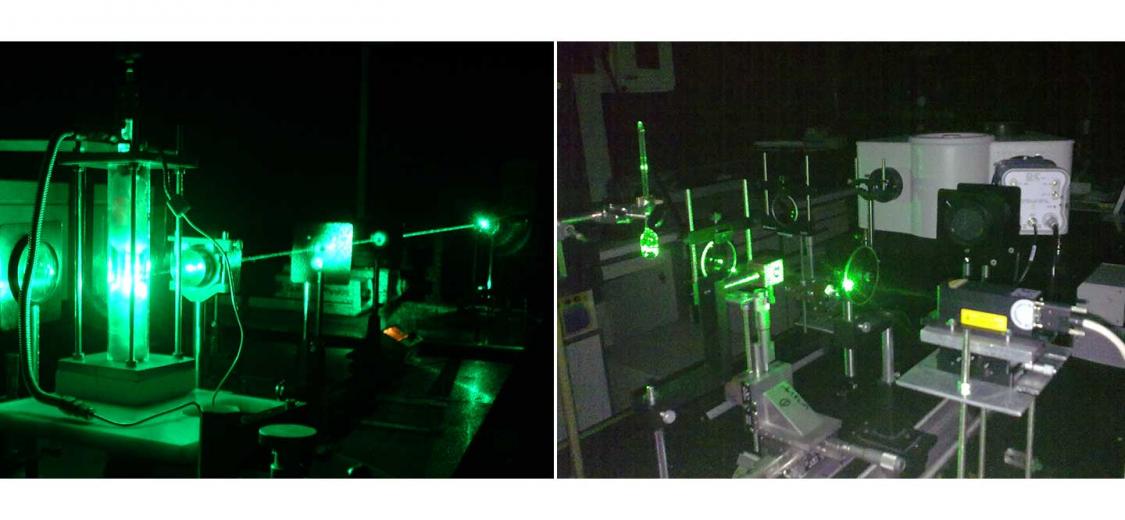PERSONNEL
| Professor Soghomon Boghosian | +30 2610 969557 | bogosian@chemeng.upatras.gr |
CURRENT RESEARCH FOCUS
- RAMAN SPECTROSCOPY OF CATALYSTS UNDER OPERATING CONDITIONS
The molecular structure and vibrational properties of supported metal oxide and mixed metal oxide catalyst systems are studied by In situ Raman spectroscopy combined with 18O/16O isotopic labeling and/or in situ FTIR. Particular goals pertain to:
- determine the speciation of deposited oxometallic phases, i.e. the configuration (mono-oxo vs poly-oxo), nuclearity (isolated/monomeric or associated/polymeric), extent of crystallization of deposited species etc
- monitor the temperature dependent structural evolution for the deposited metal oxide species (from the precursor solution to the calcined catalyst)
- understanding the structure/function relationships at the molecular level for assisting the improvement of existing catalysts and developing catalytic materials with optimal properties
- characterize the structure, defects, crystallinity and extent/type of oxygen vacancies in ceria-based mixed metal oxide materials
- RAMAN SPECTROSCOPY AND THERMODYNAMICS
Correlations of spectral intensity data with the stoichiometry, the equilibrium constants and the thermodynamics of reactions in solution and in gaseous phase
- INORGANIC COORDINATION COMPLEXES
Structure of molten salts, ionic liquids and gases at high temperatures by Raman spectroscopy and UV/VIS. Physicochemical properties of catalytic systems in molten salts and ionic liquids
- STRUCTURAL DAMAGE OF CULTURAL HERITAGE MATERIALS BY RAMAN SPECTROSCOPY
INFRASTRUCTURE/FACILITIES
- Raman set-up of “open geometry” with visible laser excitation, double spectrometer and PMT detection
- Raman set-up of “open geometry” with visible laser excitation, single spectrometer, multichannel CCD detection; optional Raman optical fiber probe
- Versatile in situ optical Raman reactor cells and Raman/FTIR heating stage, enabling conditioning of catalyst samples with optional simultaneous monitoring of catalyst performance (operando Raman spectroscopy)
- Inert atmosphere glove boxes and all-glass vacuum lines for handling air/moisture – sensitive materials and chemicals
RESULTS - ACHIEVEMENTS
The molecular structural properties of a large number of catalytic systems (either supported transition metal oxides or mixed metal oxides) have been studied using in situ Raman spectroscopy by varying the process parameters (gas atmosphere, temperature) and investigating the structural “response” of each catalytic system at steady state. The key step has been the design of two versatile “optical” reactors (enabling also differential reactor operation) allowing for laser-excitation of the studied catalyst material and collection of the scattered light at 90o. The systems studied include transition metal oxide based solid as well as molten salt catalysts supported in various oxide supports (SiO2, TiO2, ZrO2, SiO2-TiO2, Al2O3, industrial carriers etc) used for a number of reactions with interest for industrial processes (e.g. SO2 oxidation, SCR of NO by NH3, oxidative dehydrogenation of light alkanes etc). Whereas pertinent structure-activity relationships have been inferred for several catalytic systems based on supported transition metal oxides (e.g. V2O5, MoO3), structural information and response to alterations of the reactor environment are available on many supported catalytic systems (based on V2O5, MoO3, WO3, CrO3 etc) as well as for ceria-based mixed metal oxide materials.
Reaction equilibria in solution and/or in the gas phase are studied by Raman spectroscopy. Raman band intensities are correlated to the stoichiometry and the thermodynamics (equilibrium constant, enthalpy) based on a proposed procedure. Partial pressures (including vaporization thermodynamics), stoichiometries and enthalpies are determined from Raman data.
